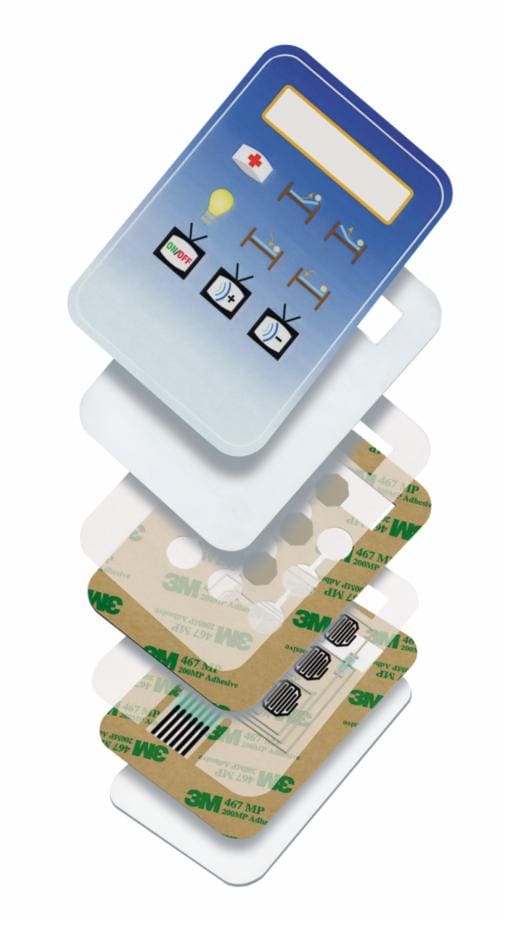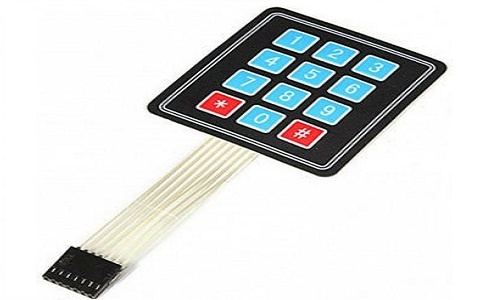The Manufacturing Refine Behind Membrane Change: What You Need to Know
The production process behind membrane layer switches combines mindful design, product selection, and quality assurance. It begins with comprehending the details of membrane button style and progresses through various stages, including material choices and printing methods. Each stage plays an important role in guaranteeing performance and longevity. Nonetheless, the complexities of layer building and the strenuous testing criteria might reveal understandings that are not immediately evident. What lies beyond these fundamental components?
Understanding Membrane Change Layout
Although membrane switches may appear basic initially glance, their design includes complex factors to consider that assure functionality and sturdiness. The layout procedure starts with a detailed understanding of user requirements, consisting of the user interface's desired application and ecological variables. Comfort designs is a key element, as the format has to promote convenience of usage while making certain that responsive comments satisfies individual expectations.Moreover, the layering of elements, such as graphic overlays, adhesive layers, and conductive traces, must be precisely crafted. membrane switch. This split setup not only influences the button's responsiveness yet likewise impacts its longevity. Attention is given to the sealing strategies used to secure against moisture and dirt, which might compromise efficiency. Furthermore, style considerations include aesthetics, where shade plans and visual quality improve user experience. Inevitably, the style of membrane switches over balances capability, user experience, and resilience, guaranteeing that they satisfy the needs of various applications efficiently
Materials Used in Membrane Change Production
When selecting materials for membrane layer switch manufacturing, it is vital to ponder both performance and durability. The main materials consist of polyester and polycarbonate movies, which supply flexibility and stamina. These films are commonly coated with sticky to assure appropriate bonding to substratums. Conductive inks, generally made up of silver or carbon, are crucial for developing electrical connections within the button, permitting trustworthy operation.Additionally, a protective layer, such as a difficult layer, is frequently put on improve scrape resistance and longevity. The option of backing product, such as acrylic or foam, can considerably affect the button's responsive feel and general customer experience. Moreover, different ecological variables, including temperature level and moisture, should direct product option to assure peak performance in particular applications. Eventually, the best mix of products adds to the membrane layer button's capability and life-span, making educated selections essential for producers.
The Printing Process: Creating Graphics and Text
The printing process in membrane switch manufacturing plays a significant role in producing top quality graphics and text. Various graphic layout strategies are used to assure visual appeal and performance, while cautious ink choice techniques are vital for toughness and efficiency. Comprehending these elements is fundamental for accomplishing finest results in membrane button style.
Graphic Style Techniques
Graphic design strategies play a crucial function in the printing process of membrane layer switches, as they define exactly how graphics and text will ultimately appear on the final item. Reliable graphic layout involves the strategic usage of fonts, formats, and shades to boost readability and aesthetic appeal. Developers typically use vector graphics for scalability, ensuring that photos continue to be sharp at numerous dimensions. Additionally, attention to contrast and alignment is important, as it influences user interaction and aesthetic quality. The unification of branding components, such as logo designs, have to be taken care of with like keep brand stability. On the whole, thoughtful graphic style strategies add considerably to the performance and attractiveness of membrane switches, influencing customer experience and product performance.
Ink Choice Approaches
Picking the suitable ink is necessary for attaining the desired visual high quality and longevity in membrane layer switch production. Various ink types are used, consisting of solvent-based, water-based, and UV-curable inks. Each kind uses distinctive characteristics, such as resistance, adaptability, and bond to environmental factors. Solvent-based inks are frequently favored for their sturdiness and dynamic colors, while water-based inks are much more eco-friendly however may have limitations in adhesion. UV-curable inks provide quick healing and durable efficiency. Furthermore, color matching techniques guarantee that the picked inks straighten with style specs. Ultimately, the selection of ink need to take into consideration variables such as application approach, substratum compatibility, and end-use requirements to accomplish exceptional cause membrane switch graphics and message.
Layer Building And Construction and Setting Up

Product Option Process
A careful selection of materials is vital in the production procedure of membrane layer buttons, as it straight affects performance and longevity. The key products made use of consist of polyester, polycarbonate, and numerous conductive inks. Polyester is usually preferred for its excellent resistance to chemicals and abrasion, making it suitable for harsh environments. Polycarbonate, on the other hand, provides superior quality and influence resistance, which is beneficial for applications requiring presence and effectiveness. Conductive inks, commonly made up of silver or carbon, are essential for producing trustworthy electrical pathways. In addition, the option of sticky materials impacts the total honesty of the switch - membrane switch. Assessing factors such as ecological direct exposure, tactile feedback, and visual demands guides suppliers in picking the finest materials for their details applications
Layer Attachment Methods
Sticking layers in membrane layer switch building and construction is a crucial process that assures performance and longevity. Numerous bond techniques are used to secure ideal bonding in between layers, which generally consist of the use of adhesives, heat, and stress. Pressure-sensitive adhesives (PSAs) are commonly made use of for their ease of application and prompt bonding abilities. In addition, thermal bonding methods can be used, where warm is made use of to activate glue residential properties, securing a solid bond. The choice of bond technique mostly relies on the materials entailed and the particular application needs of the membrane switch. Correct alignment and consistent application of adhesives are vital to prevent flaws, safeguarding the switch operates properly throughout its intended life expectancy.
Top Quality Control Steps
Ensuring quality assurance during the layer building and setting up of membrane layer switches is vital for keeping efficiency and integrity. This procedure usually entails several critical measures, including comprehensive evaluations at each stage of production. Suppliers use advanced screening approaches, such as peel tests and adhesion assessments, to confirm the stability of layer bonds. In addition, aesthetic inspections are conducted to identify any problems in printing or material variances. Ecological conditions, such as temperature and humidity, are thoroughly kept track of to ensure suitable treating and bond. Normal calibration of tools assists preserve accurate manufacturing standards. By implementing these quality assurance actions, suppliers can substantially minimize the danger of product failing, assuring that the final membrane switches fulfill the called for specs and customer assumptions.
Examining and High Quality Control Steps

Developments in Membrane Layer Change Technology
As innovations in modern technology remain to evolve, membrane layer switches are gaining from ingenious growths that improve their functionality and customer experience. One noteworthy innovation is the assimilation of capacitive touch technology, which permits more instinctive and responsive interface. This shift not just improves visual appeals yet also minimizes mechanical damage, expanding the life-span of the switches.Additionally, developments in visuals overlay products have actually caused enhanced toughness and resistance to ecological elements such as moisture and UV light. These materials now use enhanced clarity and brightness, additional boosting the aesthetic appeal.Furthermore, the unification of clever innovation is transforming membrane switches over into interactive control board, allowing connectivity with IoT tools. This connectivity promotes a smooth individual experience, paving the way for applications in different industries, from medical care to consumer electronics. Jointly, these technologies position membrane changes as essential components in modern gadget design.
Often Asked Inquiries
The length of time Does the Membrane Switch Production Refine Take?
The period of the membrane button manufacturing procedure can differ considerably. Factors such as complexity, products used, and manufacturing quantity influence timelines, with regular production ranging from a couple of days to page a number of weeks for completion.
What Are the Typical Applications for Membrane Layer Switches?
Membrane layer buttons are commonly made use of in various markets, consisting of vehicle controls, house appliances, clinical devices, and consumer electronic devices (membrane switch). Their versatility and longevity make them view perfect for applications calling for user-friendly user interfaces and reliable performance in diverse environments
Can Membrane Layer Switches Over Be Customized for Details Requirements?

What Is the Life-span of a Regular Membrane Layer Switch Over?
The lifespan of a typical membrane layer switch varies, however normally, it ranges from 1 to 5 million cycles. Variables such as use, environment, and worldly quality considerably affect resilience and general efficiency with time.

Are Membrane Layer Changes Eco Friendly?
The environmental kindness of membrane changes differs. Some products utilized might not be recyclable, while others can be environmentally friendly. The overall effect depends upon making techniques and materials, demanding mindful factor to consider during option and disposal. The manufacturing procedure behind membrane changes combines careful design, material option, and top quality control. It begins with recognizing the ins and outs of membrane layer button style and advances through numerous stages, consisting of material selections and printing methods. When picking materials for membrane layer button manufacturing, it is necessary to contemplate both efficiency and resilience. A cautious choice of materials is vital in the production procedure of membrane switches, as it straight influences functionality and durability. The choice of bond approach largely depends on the products involved and the particular application requirements of the membrane layer button.